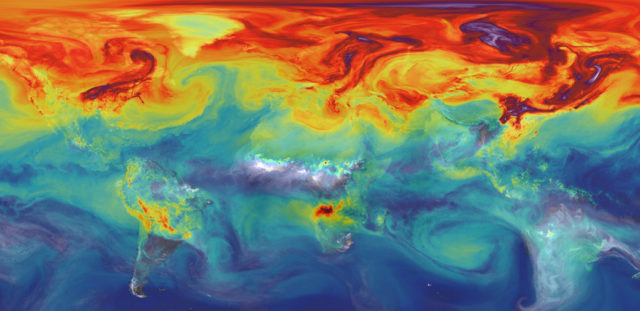
A poll conducted by the American Lung Association (ALA) reveals that people want oil and gas companies to better control the leakage of methane into the environment. Three out of five people say they approve of the restrictions the Environmental Protection Agency (EPA) placed on the industry last month.
“We are very pro air-quality standards, so we exercise our authority under the Clean Air Act to advocate for things like pollution reduction,” says Dawn Mullally, director of Air Quality and Transportation at the ALA. “Any regulations that will improve health matters to us and we pay attention to and track those things.”
Methane is a powerful greenhouse gas that can cause respiratory harm when inhaled. The ALA says emission pollution is especially detrimental to children, the elderly and those with conditions like asthma, emphysema or chronic obstructive pulmonary disease. The health risks are heightened closer to facilities that produce the gas.
The new EPA rules require operators to use optical gas imaging cameras for leak detection and to fix any leaks within 30 days. Emissions from compressors must be reduced by 95 percent, and the rods in the compressors must be replaced every three years. The EPA calculates that with these standards in place, more than half a million tons of methane particles can be eliminated from the atmosphere by 2025.
After the new regulations were issued, the ALA surveyed more than 1,000 people across the country, asking questions like “Do you favor or oppose these limits on methane emissions from new oil and gas facilities?” Sixty-one percent of people, mainly from the West, Midwest and Northeast, agree with this regulation. More than half of those say they do so “strongly.”
“I think that in Colorado people have a real love for the environment. We’re a very healthy state so this just makes sense to people here,” Mullally says.
Methane accounts for 20 percent of Colorado’s greenhouse gasses, according to the Colorado Department of Public Health and Environment, and has been rising since the ’90s.
Urbanization and industrialization indirectly increases methane levels in the atmosphere — 60 percent are human-activity induced. Gas and petroleum production, storage and circulation are the biggest contributors, at 28 percent, releasing about 32 million tons into the atmosphere per year. Other factors include agricultural waste, abandoned mines and landfills.
Colorado is sixth in the nation for natural gas production, which has doubled in the last decade.
The recent EPA rules apply specifically to new and modified establishments. Existing operations are required to report data about technologies and practices used to decrease methane, in an effort to form regulations for them as well. These are expected in the next few years, as many studies are being conducted on the best way to reduce emissions.
The Environmental Defense Fund (EDF) is at the forefront of such research. The organization is partnered with Colorado State University staff in a series of 16 scientific studies measuring methane emissions, data that has been used in drafting various climate legislations.
“When this all began five or 10 years ago there was little information about this gas’ prevalence so we launched an effort to work with academic institutions to find out more,” Jon Goldstein, senior policy manager for EDF Rocky Mountain region, says.
The analyses of more than 100 plants all over the country reveals that the amount of methane that escapes is equal to the amount used by more than 3 million households. Thirty percent of emissions come from when the equipment is not even in use. The studies also found one in six facilities use methods that produce three times the rate of emissions than normal.
The cost of reducing methane leaks accounts for a large portion of the opposition towards methane regulation.
Earlier this month, the natural gas organization Our Nation’s Energy Future released a report estimating 63 percent of profits they make per thousand cubic feet would go toward cutting methane leaks. They calculate it would cost almost $300 million each year to eliminate emission particles equaling 2.2 billion tons.
Regardless, the general consensus is that existing guidelines are not enough since global temperatures keep rising, an issue the new regulations seek to address. There are additional standards under the White House Climate Action Plan, which claims future changes to gas production could yield climate benefits of $690 million. This number is configured by the EPA to put a monetary value on avoided environmental consequences, such as reduced hospital visits.
Another advantage is job stimulation. Adopting reduction strategies means a need for inspectors, maintenance workers and more researchers.
“There is a market-based solution we try to focus on,” Goldstein says. “It’s really a win-win. You’re creating productivity from both the business and environmental perspectives.”
It was also recently announced that CSU received $3.5 million to partner with the Colorado School of Mines to develop and run a methane emission research facility to determine the most resourceful technologies to sense and evaluate methane leaks from oil and gas facilities.














